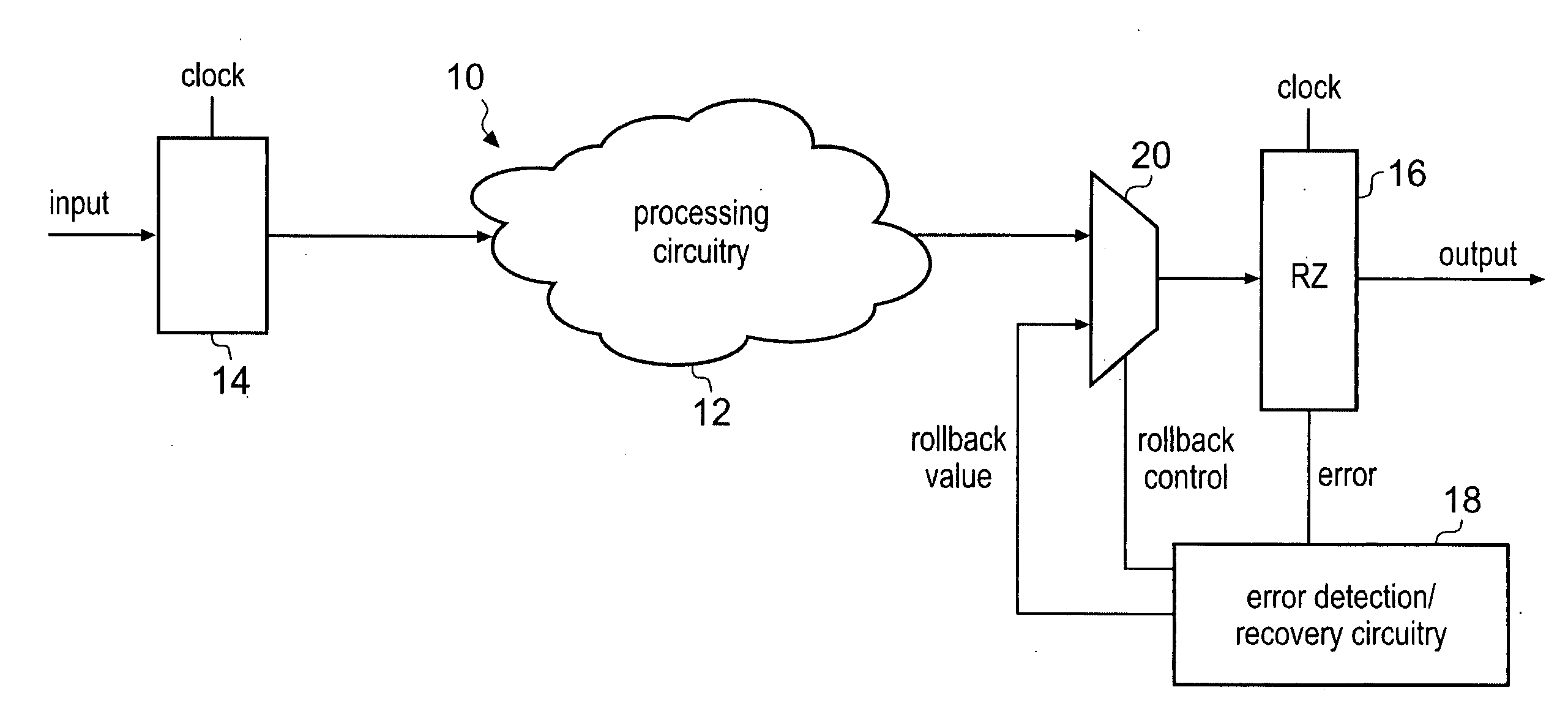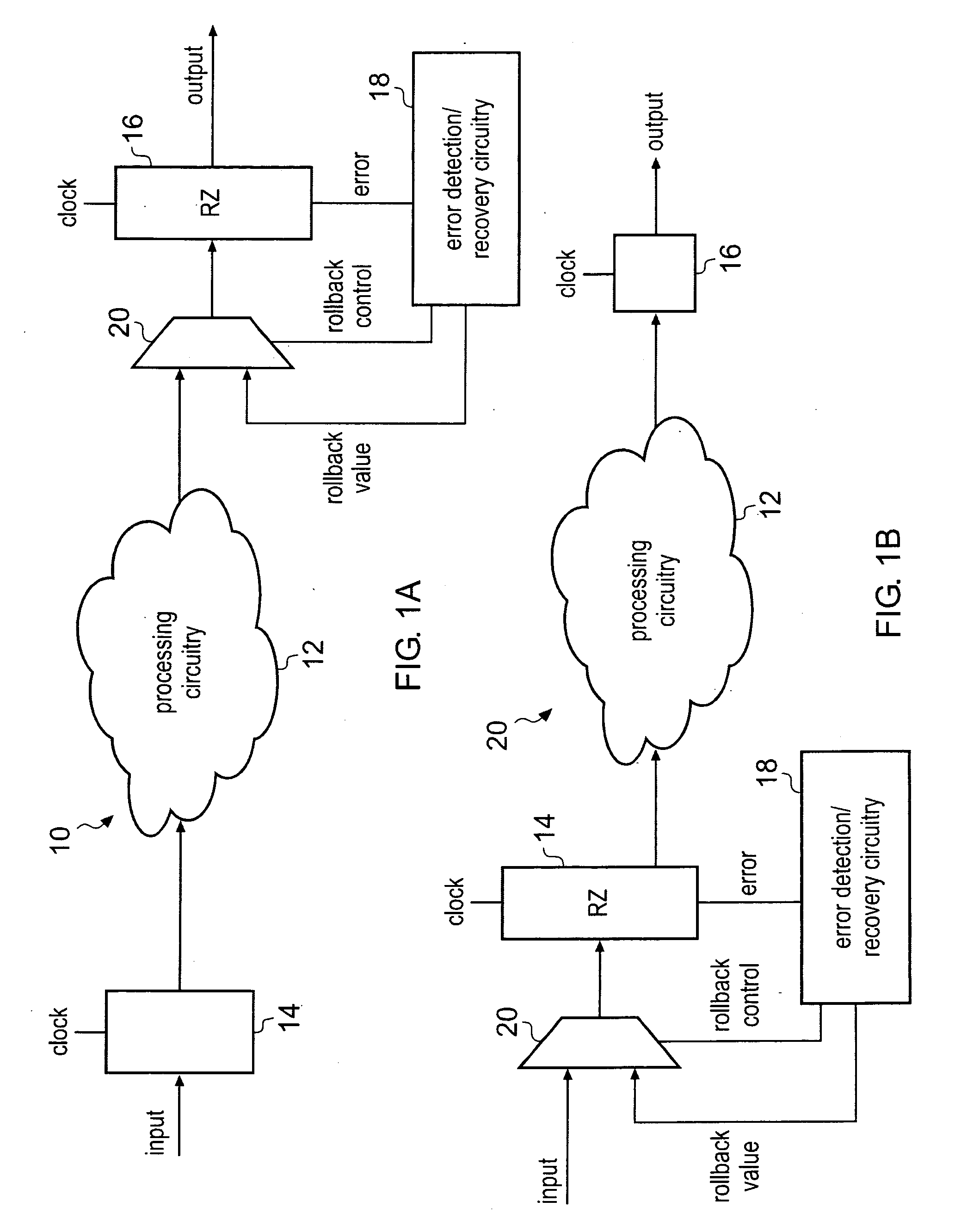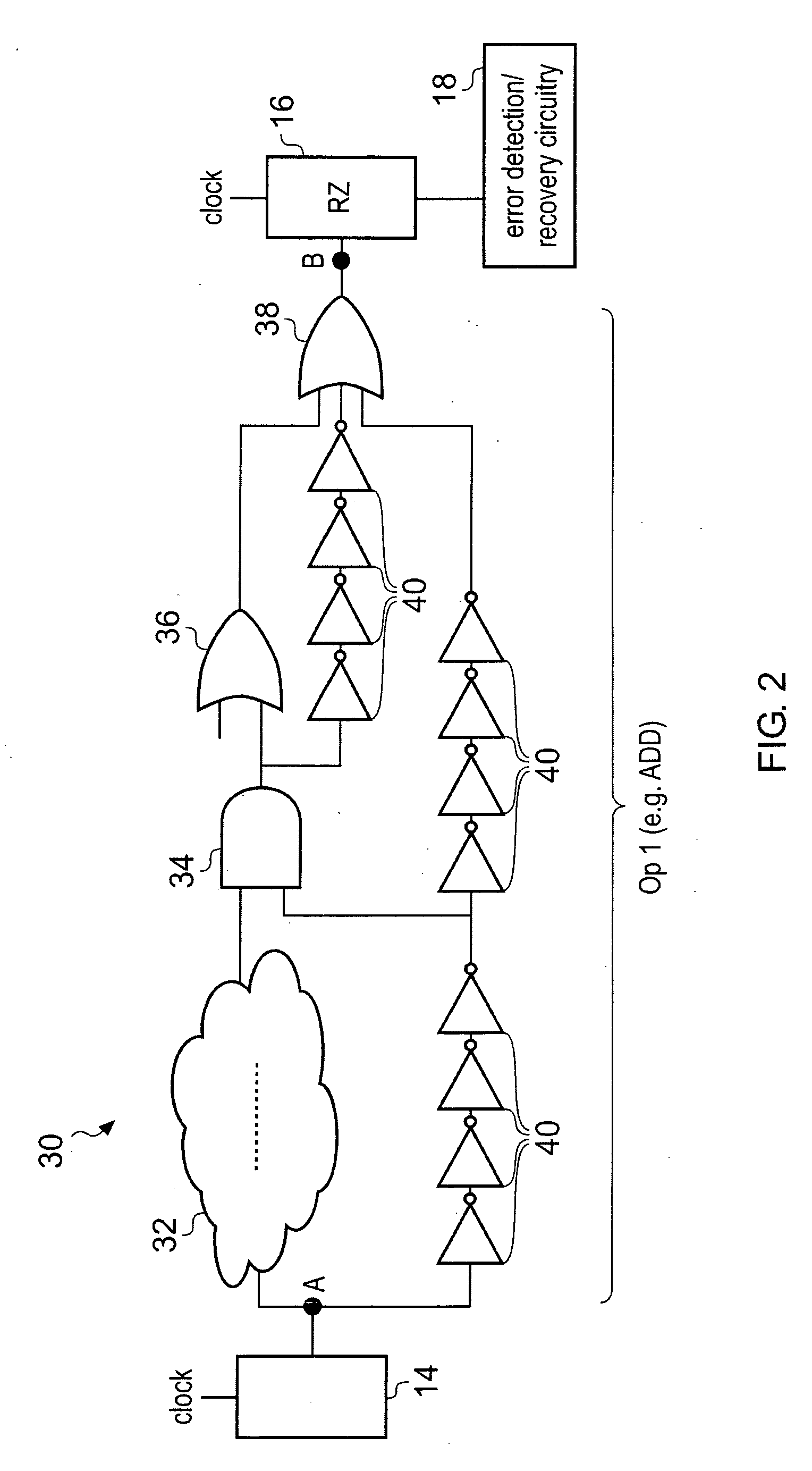Low power, high reliability specific compound functional units
a technology of compound functional units and functional elements, applied in the field of data processing, can solve the problems of time taken for processing circuitry, errors in the operation of these functional elements, and increased likelihood of errors occurring, so as to reduce the total number of compound functional units required, reduce the amount of processing circuitry required, and reduce the number of processing operations.
- Summary
- Abstract
- Description
- Claims
- Application Information
AI Technical Summary
Benefits of technology
Problems solved by technology
Method used
Image
Examples
Embodiment Construction
[0052]FIG. 3 shows a compound functional unit 50 according to the present technique. In this example the compound functional unit 50 has two evaluation stages, although it will be appreciated that there could be more evaluation stages. The first evaluation stage includes circuitry 52 and gates 54, 56, 58 for performing an ADD operation, for example. The circuitry 52, 54, 56 and 58 collectively make up a functional element. The first evaluation stage has input latches 64, 66 and output latches 68, 70. The second evaluation stage has a functional element for performing a SHIFT operation. The functional element in the second evaluation stage includes gates 60, 62. The output latches 68, 70 for the first evaluation stage are reused as input latches for the second evaluation stage. The second evaluation stage has an output latch 72. In the example shown in FIG. 3, latches 68 and 72 have been provided with error detection / recovery circuitry 80 according to the Razor technique. Again, for ...
PUM
 Login to View More
Login to View More Abstract
Description
Claims
Application Information
 Login to View More
Login to View More - Generate Ideas
- Intellectual Property
- Life Sciences
- Materials
- Tech Scout
- Unparalleled Data Quality
- Higher Quality Content
- 60% Fewer Hallucinations
Browse by: Latest US Patents, China's latest patents, Technical Efficacy Thesaurus, Application Domain, Technology Topic, Popular Technical Reports.
© 2025 PatSnap. All rights reserved.Legal|Privacy policy|Modern Slavery Act Transparency Statement|Sitemap|About US| Contact US: help@patsnap.com



